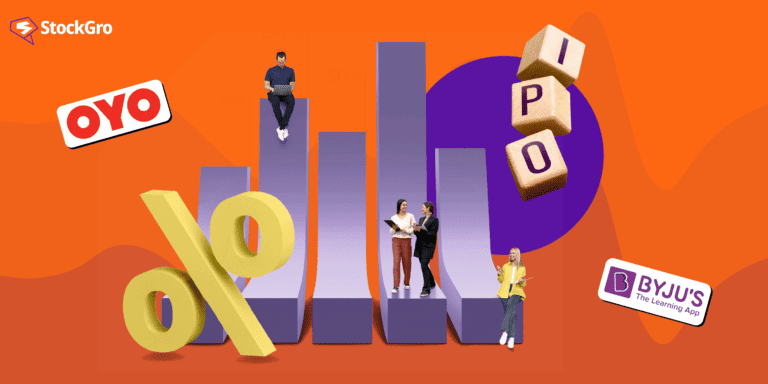
With your portfolio value soaring high one moment, and the very next minute, it’s as if the sky is falling, with stock prices tumbling faster than you can say ‘bear market comes to the world of market cycles!
A market cycle is like a Bollywood drama – it has its ups, it has its downs, but above all, it’s full of surprises. Each cycle tells a unique story, driven by economic trends, investor sentiment, and unpredictable events.(remember the great crash of 2020 due to a certain pesky virus?)
In the Indian stock market alone, which currently boasts a total market capitalisation of over $3.5 trillion, these cycles have led to significant swings. The SENSEX, a key benchmark index, soared to an all-time high of over 62,000 points in late 2022, only to retreat to around 57,000 points during March 2023.
But why should you care about these cycles? Well, understanding market cycles can be the difference between making your fortune in investing or watching your hard-earned money vanish faster than a plate of piping hot samosas at a family gathering.
Let’s dive into the fascinating world of booms, busts, bulls, and bears, shall we?
What are Market Cycles and 4 Market Phases
Market cycles are the recurring patterns of ups and downs in the financial markets. These cycles are driven by various factors, from investor sentiment to economic indicators, and they can last for months, years, or even decades.
Market cycles are like the seasons of finance, with each phase bringing its own set of opportunities and challenges.
You may also like: Wipro buyback 2023: All you need to know about repurchasing shares
Market cycles are generally categorised into four phases:
1. Accumulation phase
This is the start of the upward trend where informed investors start buying into the market when it is at its lowest point or the “bottom.” This phase is characterised by pessimism, with most investors exiting the market due to previous losses.
Astute investors and institutions quietly scout for undervalued stocks with growth potential. For instance, when the COVID-19 pandemic hit, the accumulation stage was in full swing as investors sought out stocks the crisis had battered. They saw the potential for these stocks to rebound and took advantage of the opportunity.
2. Markup phase:
As we move into the markup stage, stock prices begin to rise, and investor sentiment turns optimistic. It’s when investors start to believe that the market has hit its bottom and is on the upswing.
With the progress of vaccine rollouts and declining COVID-19 cases, investors grew more hopeful about the future of the economy. This surge in optimism led to a demand boom for stocks expected to benefit from the impending economic recovery.
For instance, sectors like pharmaceuticals, IT, and consumer goods in India gained momentum during the markup stage. Investors turned bullish on these sectors, driving their stock prices upward.
3. Distribution phase
This is the peak of the market cycle, where prices are at their highest. Investor sentiment is highly optimistic, and there is widespread participation in the market. Informed investors start selling off their holdings during this phase.
Trading volumes surge, and investor sentiment shifts from optimism to caution. In December of the previous year, the Indian benchmark indices reached record highs, propelled by factors such as increased retail and domestic institutional investor participation, favourable government policies, and a rise in credit demand.
However, recent developments, including tensions between Russia and Ukraine, interest rate hikes by major central banks, consumption slowdown in India due to inflation, and expensive stock valuations, have triggered a correction in the Indian stock market.
This correction suggests a potential shift in the market cycle, leading to heightened volatility and uncertainty in the short term.
4. Markdown phase
In the markdown phase, we witness the final act of the market cycle. This is when the market experiences a sharp decline, and investor sentiment turns sour. It’s often triggered by factors such as economic recessions, declining corporate earnings, or significant global events that shake investor confidence.
In this stage, caution is key as the market faces challenges and navigates stormy waters. It’s a time when investors need to weather the storm and assess the long-term potential of their investments.
Also Read: Indian startup valuations hit rock bottom
How do market cycles work?
You might be wondering how market cycles come to life? The captivating world of market cycles unveils itself when trends emerge within a specific sector or industry in response to groundbreaking innovation, fresh product offerings, or changes in regulations.
These fascinating patterns, often referred to as secular cycles, bring about periods where multiple companies in an industry experience similar growth patterns in revenue and net profits. It’s a cyclical dance that plays out in the business realm.
However, here’s the catch: spotting market cycles in real-time is as challenging as finding a needle in a haystack.
They rarely have clear beginnings or endings, leading to debates and confusion among analysts and strategists. But, experienced market veterans acknowledge their existence, and many investors actively seek ways to profit from them by making strategic moves ahead of the curve.
Also Read: How to benchmark like a boss: Your guide to investment success!
How Long is a Market Cycle?
Market cycles, like seasons, have varied durations and aren’t bound to a specific timeline. They can span from a few months to several years as they are influenced by factors like economic conditions, investor sentiment, and global events.
Typically, a complete market cycle going from the peak of one bull market through a bear market and back to a new bull market can last between four to ten years. But some cycles, known as secular cycles, can last for decades.
These cycles can be especially volatile in stock markets of developing countries like India as they are impacted by factors such as evolving economic policies, fluctuating interest rates, and shifts in domestic and international demand.
For instance, the boom cycle of 2003-2007 lasted nearly five years and it was driven by economic growth and strong corporate earnings. However, the global financial crisis of 2008 abruptly ended this phase, leading to a sharp downfall in the market.
On the other hand, the market rebounded faster than anticipated during the COVID-19 pandemic because of aggressive fiscal and monetary support.
It is important for investors to understand cycle lengths as it will help them make informed decisions. Long-term investors often keep a track of these cycles and benefit from a buy-and-hold strategy, while traders may adjust their positions based on shorter cycles.
It is challenging to accurately time these cycles, but historical patterns can help you gain valuable insights. By identifying these trends early, you can better prepare for potential market shifts and invest accordingly.
Market cycles Vs Market trends
In the world of finance, market cycles and market trends are like two sides of a coin. While market cycles bring the rise and fall of stock prices, market trends guide us on the path the market takes over time.
Market trends can change based on a new product launch, a quarterly earnings report, or even a tweet from a CEO! These are short-term changes influenced by immediate factors.
Market cycles, on the other hand, are like the tectonic plates of the Earth. Their movement is slower, driven by substantial, structural changes in the economy. Think interest rates, GDP, and inflation.
As an investor or trader, having the ability to anticipate the market cycle in advance is like having a superpower.

